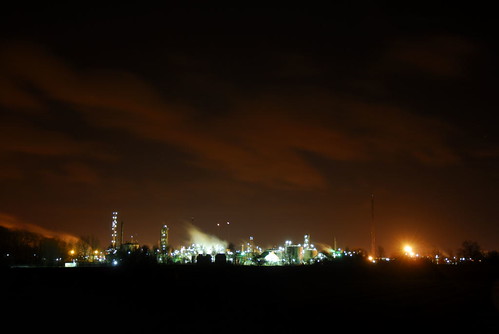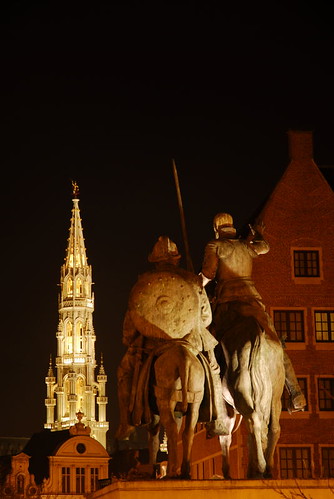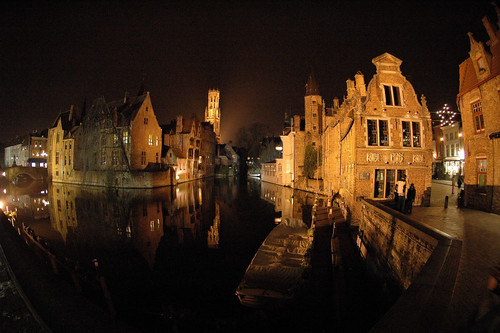Night photography is one of my favourite activities when I need to relax...
Here are a few things I learned by photographing at night:
- in a city, use fast and wide lenses;
even so you'll need high
ISO to expose properly. My logical choices: Tokina 12-24 wide angle
zoom and
fisheye 10.5mm (Nikkor). The fisheye at f2.8 will give you enough depth
of field
and will catch all the available light, allowing you to take hand held
shots at
a reasonable ISO value (320-400). When using the Tokina, you'll have to
increase
ISO to 640-800 sometimes exceptionally ISO1600.
- for night open air concerts for instance, you'll need longer lenses
and I
would recommend lenses with stabilization (VR or OS). I have some
interesting
shots with the 80-400OS.
- to get the perfect quality when shooting buildings for instance, use
a tripod,
activate the timer, and work at the lowest possible ISO value and with
a small
aperture (f8-f11) to increase depth of field and increase picture
quality -
don't forget that in some cities (like Paris, France) it is forbidden
to use a
tripod unless you have a license.
- outside the city lights, doing night landscape photography, you'll
need a
tripod, same procedure as the above paragraph. Don't forget to take
your
flashlight. In the dark it is sometimes difficult to activate options
like the
timer or the mirror lock-up (important to reduce camera-shake)
Here are a few examples:
Nikkor 18-70 on a tripod


